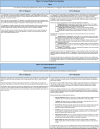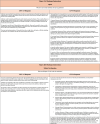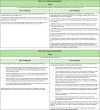ChatGPT's Role in Improving Education Among Patients Seeking Emergency Medical Treatment
- PMID: 39319818
- PMCID: PMC11418867
- DOI: 10.5811/westjem.18650
ChatGPT's Role in Improving Education Among Patients Seeking Emergency Medical Treatment
Abstract
Providing appropriate patient education during a medical encounter remains an important area for improvement across healthcare settings. Personalized resources can offer an impactful way to improve patient understanding and satisfaction during or after a healthcare visit. ChatGPT is a novel chatbot-computer program designed to simulate conversation with humans- that has the potential to assist with care-related questions, clarify discharge instructions, help triage medical problem urgency, and could potentially be used to improve patient-clinician communication. However, due to its training methodology, ChatGPT has inherent limitations, including technical restrictions, risk of misinformation, lack of input standardization, and privacy concerns. Medicolegal liability also remains an open question for physicians interacting with this technology. Nonetheless, careful utilization of ChatGPT in clinical medicine has the potential to supplement patient education in important ways.
Conflict of interest statement
Figures




Similar articles
-
Assessing ChatGPT's Competency in Addressing Interdisciplinary Inquiries on Chatbot Uses in Sports Rehabilitation: Simulation Study.JMIR Med Educ. 2024 Aug 7;10:e51157. doi: 10.2196/51157. JMIR Med Educ. 2024. PMID: 39042885 Free PMC article.
-
ChatGPT's performance in German OB/GYN exams - paving the way for AI-enhanced medical education and clinical practice.Front Med (Lausanne). 2023 Dec 13;10:1296615. doi: 10.3389/fmed.2023.1296615. eCollection 2023. Front Med (Lausanne). 2023. PMID: 38155661 Free PMC article.
-
Evaluating ChatGPT's effectiveness and tendencies in Japanese internal medicine.J Eval Clin Pract. 2024 Sep;30(6):1017-1023. doi: 10.1111/jep.14011. Epub 2024 May 19. J Eval Clin Pract. 2024. PMID: 38764369
-
Evaluating the role of ChatGPT in gastroenterology: a comprehensive systematic review of applications, benefits, and limitations.Therap Adv Gastroenterol. 2023 Dec 25;16:17562848231218618. doi: 10.1177/17562848231218618. eCollection 2023. Therap Adv Gastroenterol. 2023. PMID: 38149123 Free PMC article. Review.
-
Innovating Personalized Nephrology Care: Exploring the Potential Utilization of ChatGPT.J Pers Med. 2023 Dec 4;13(12):1681. doi: 10.3390/jpm13121681. J Pers Med. 2023. PMID: 38138908 Free PMC article. Review.
Cited by
-
Novel Evaluation Metric and Quantified Performance of ChatGPT-4 Patient Management Simulations for Early Clinical Education: Experimental Study.JMIR Form Res. 2025 Feb 27;9:e66478. doi: 10.2196/66478. JMIR Form Res. 2025. PMID: 40013991 Free PMC article.
-
Using Artificial Intelligence ChatGPT to Access Medical Information about Chemical Eye Injuries: A Comparative Study.JMIR Form Res. 2025 Jun 30;9:e73642. doi: 10.2196/73642. Online ahead of print. JMIR Form Res. 2025. PMID: 40601437 Free PMC article.
-
Evaluating Accuracy and Readability of Responses to Midlife Health Questions: A Comparative Analysis of Six Large Language Model Chatbots.J Midlife Health. 2025 Jan-Mar;16(1):45-50. doi: 10.4103/jmh.jmh_182_24. Epub 2025 Apr 5. J Midlife Health. 2025. PMID: 40330238 Free PMC article.
-
Preliminary evaluation of ChatGPT model iterations in emergency department diagnostics.Sci Rep. 2025 Mar 26;15(1):10426. doi: 10.1038/s41598-025-95233-1. Sci Rep. 2025. PMID: 40140500 Free PMC article.
References
-
- Carrasquillo O, Orav EJ, Brennan TA, et al. . Impact of language barriers on patient satisfaction in an emergency department. J Gen Intern Med. 1999;14(2):82–7. - PubMed
MeSH terms
LinkOut - more resources
Full Text Sources
Medical
